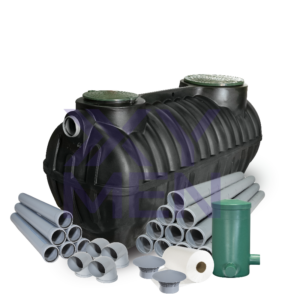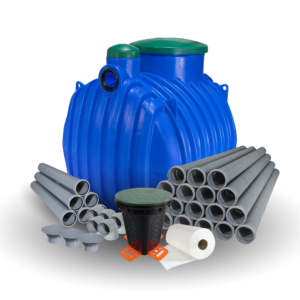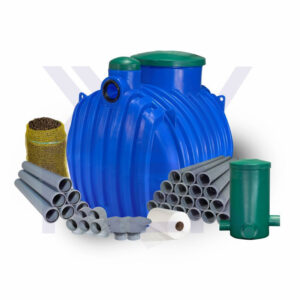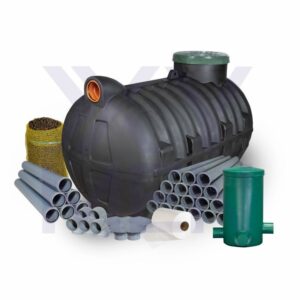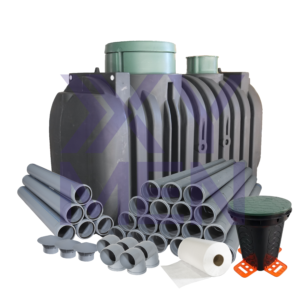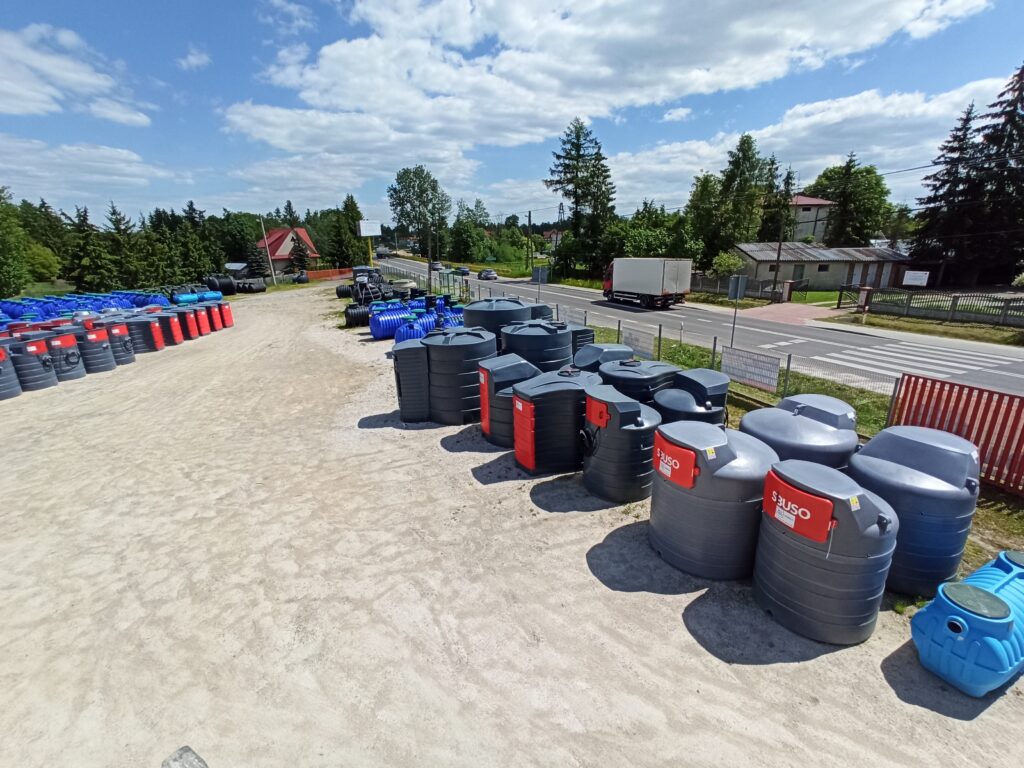Ecological treatment plants
A septic tank is a tank (single, double, or triple chamber) in which most of the treatment processes in ecological sewage treatment plants take place. Through sedimentation and flotation processes, solid particles lighter than the wastewater float to the surface, forming a scum layer, while particles heavier than the wastewater settle at the bottom of the tank and form sludge. This sludge undergoes a slow fermentation process thanks to anaerobic bacteria. Pollutant particles are broken down into water-soluble substances and insoluble mineral substances. Then, by raising the level of wastewater in the settling tank, flow through the filter is forced, which guarantees the separation of floating pollutants.
The next stage of wastewater treatment is infiltration drainage, where biological wastewater treatment takes place. This is possible thanks to the oxygenation of the surface of the flowing wastewater through a low ventilation system located at the end of each drainage pipe. Thanks to simple physical phenomena, some of the air from the drainage pipes begins to dissolve in the pre-treated wastewater, which enables the growth of aerobic bacterial flora. The treated wastewater then enters the ground and is infiltrated.
What is an ecological treatment plant?
An ecological treatment plant is a system designed for aerobic and anaerobic treatment of wastewater. Anaerobic treatment takes place in a septic tank, while aerobic treatment takes place in an infiltration drain. There are two types of ecological treatment plants available for sale: – drainage and tunnel. How do they differ?
The main difference is the wastewater treatment system, which in the case of tunnel treatment plants includes both mechanical and biological-oxygen methods. Segregation of water-insoluble waste takes place in functional tunnels. In the case of a drainage treatment plant, wastewater first enters a septic tank, then flows through an infiltration drain and is treated in a biological-oxygen manner.
Which solution to choose? Much in this case depends on the size of the plot. If it is small in size, a more advantageous solution is a tunnel treatment plant, which takes up significantly less space.
An ecological treatment plant – a solution tailored to your needs
It is worth noting that the construction of an ecological treatment plant is an investment that is not only beneficial for the environment, but also for your wallet. What is more, it is a solution that will last for years, because the standard warranty for the tank is 10 years, and in the case of EKO NC tanks, the warranty period is up to 30 years.
Sold by us treatment plants ecological are complete sets that include the following:
septic tank,
PVC pipe DN 110 gray,
manhole distribution DN 400H,
PVC DN 110 87stp,
pipes drainage or tunnels seepage,
fireplace ventilating,
geotextile.
An issue that is worth paying attention to in the case of ecological treatment plants a8> ecological treatment plants is the possibility of adjusting their capacity to individual needs. An example could be an treatment plant ecological Metria 2000 L with tunnels, whose capacity can be 150 L or even 300 L.
The diversity of the offer means that the selection of a specific solution can be tailored to the needs and specific characteristics (primarily the size) of the plot.
Ecological treatment plants – leading manufacturers
Ecological sewage treatment plants are solutions offered by many companies, but when choosing a specific one, you should consider the quality and reputation of the manufacturer.
The leading companies on the Polish market certainly include the aforementioned Metria, as well as Marseplast and Euro-Plast. These are domestic companies that specialize not only in the production of wastewater treatment plants, but also various types of tanks. The tanks they produce have all the required approvals and meet current standards, which means they are safe for the environment. For their production, the highest quality plastics are used, which are characterized by adequate durability and strength.
Regardless of the choice of manufacturer it is important to remember also about proper a9> care for the treatment plant. What does this mean? First of all of all the necessity regular use of biopreparations, i.e. so-called bacteria for treatment plants, which are responsible for the wastewater treatment process and maintaining the full functionality of the treatment plant.

